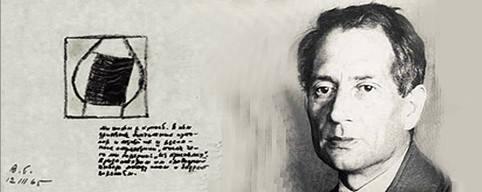
1925 - arrived in Leningrad.
1926 – studied in headed by K. Malevich GINHUKe in the Pictorial Culture Department.
1929 - worked in the magazines «Chizh (Siskin)» and «Yozh (Hedgehog)», illustrated the Oberiuty.
1934 - was arrested, and until 1938 served his time in a camp near Karaganda. When the War broke out, he went to the front.
1942 - after the contusion was evacuated to Alma-Ata.
1946 – returned to Leningrad.
1960 - experienced a sudden change in his creativity.
Exactly on Sunday, April 17 Vladimir wrote a landscape on Krestovsky Island, when he saw space in a
new way and gradually realized its new properties, «I have lived for sixty human years by that time, but every morning I felt like newly-born».
Since 1966 - lived in Peterhof. He was a member of the Artists Union, but practically didn’t show his works at exhibitions. His legacy is his school of students - ‘sterligovtsy’.
1970, January 31 – one-day exhibition together with Glebova in Scientific Research Institute of Theory and History of Architecture in Moscow. Theoretical evening meeting «On Straight and Curve.»
1970, 22 October - Exhibition in Moscow together with Glebova in State Museum of Fine Arts (the Engraving chamber).
1974 - his personal exhibition in the Artists’ Union.
Died in Leningrad, was buried at the Babigonsky cemetery near Old Peterhof.
Sterligov’s name became rather well-known at the turn of XX-XXI centuries. Due to his considerable and diverse creative activities, Vladimir Sterligov left a mark
in the lives of many of his contemporaries; he was mentioned in the writings of Dmitry Likhachev, and Yakov Druskin. However, we still don’t know much about
the artist’s very picturesque and graphic heritage.